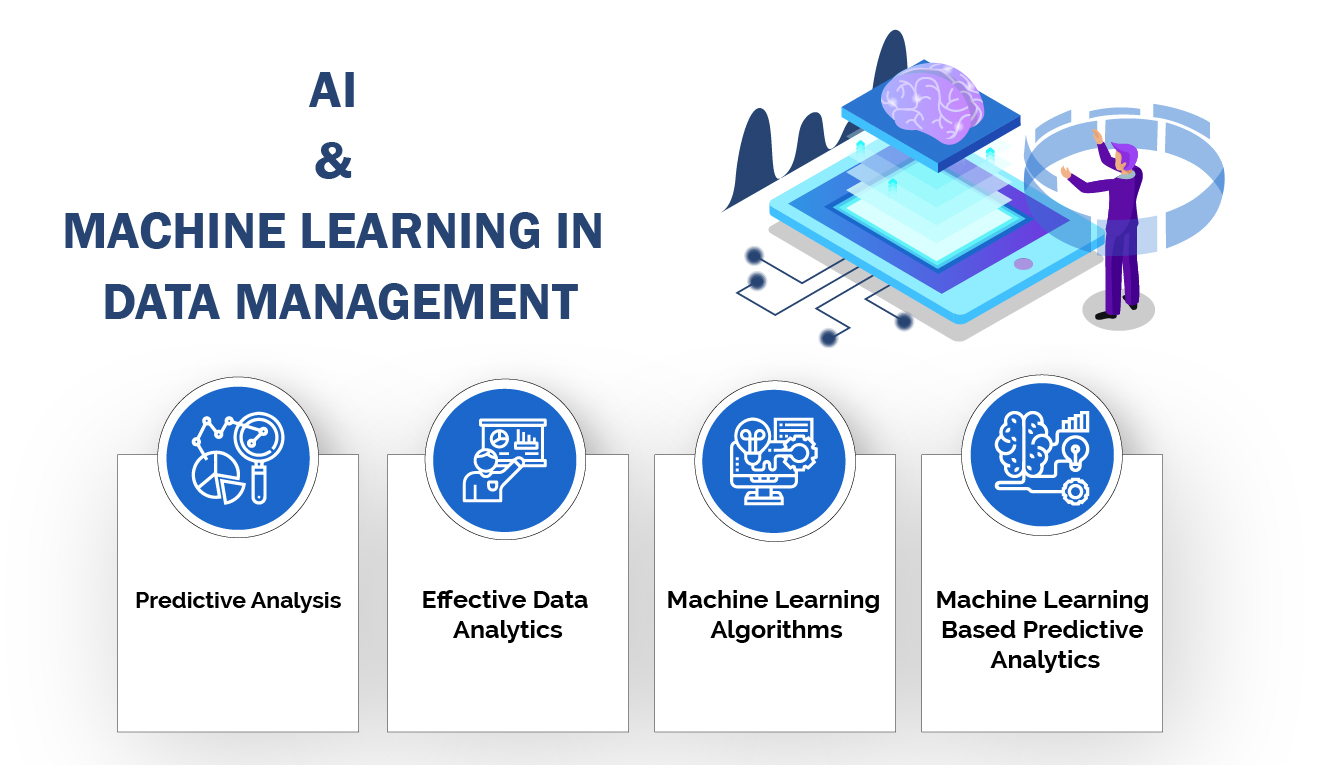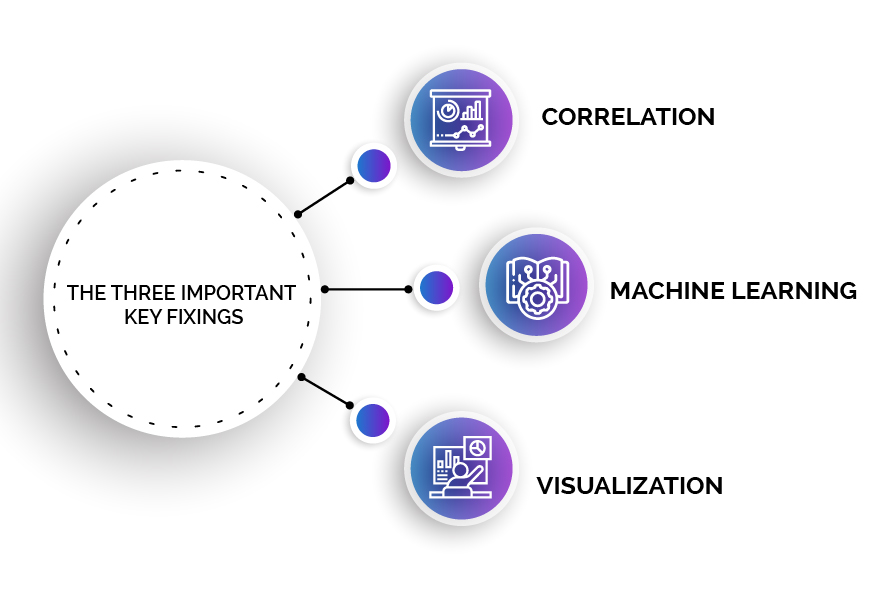
All-In-One Scriptless Test Automation Solution!
All-In-One Scriptless Test Automation Solution!
Artificial intelligence has transformed the world as we knew it. Associations and enterprises of all industries worldwide are already using AI in multiple ways to support their business operations. However, regardless of the expanded appropriation of AI, ongoing research from International Data Corporation(IDC) has discovered that half of AI projects fail for one out of four organizations. It has been found that the two primary causes for these flops are an absence of required aptitudes and unrealistic expectations. When utilized properly, big data and AI can help C-suite professionals with a wide array of functionalities. If executed right, your capacity for its’ implementation and uses are constrained only by your ability to imagine how these innovations can profit us. With the correct arrangement of standards, in any case, organizations can make AI frameworks that successfully scale, with the least expense.
Our observations uncover the difficulties and successes that organizations have had with AI and how enterprises have utilized what they’ve figured out to drive future AI achievement. This report centers around the key jobs and the significant part they play in making AI progress. Below is a list of key plan standards for AI solutions, in light of exercises gained from the research of numerous successful AI executions.
From a business standpoint, data analytics can build an income with evolving patterns and improve operational productivity. With such many trendy expressions such as data repositories, machine learning, and artificial intelligence, it can be not easy to recognize where the value of data analytics is coming from and what an outside supplier can offer. One of the most troublesome aspects seen by organizations in data analytics is that some types of information sources can be incredibly hard to analyze. As information sources are different and divided frequently, manual information has been a prerequisite for analyzing the data. Studies show that this procedure of information readiness takes around 80% of the usual time.
Likewise, a significant part of the data created by organizations has zero conventional structure; agreements, overviews, and emails all hold a plethora of information that analysts can use to reveal openings. In their day-to-day activities, people use the sharing of data in almost every aspect of their lives. Just through the simple act of a Google search alone, an abundance of data can be accumulated. This data creates large volumes of information that is consistently gathered and being consumed with the intent of, for the most part, improving our lifestyle
In the present world, business ventures are seeing an explosion of data like never before. From more traditional information gathering sources such as data libraries, networking areas to more current ones that include the Internet of Things (IoT) sensors and associated gadgets, we see an un-capped potential for information gathering. Further, the advancement of cloud innovations has framed.
As artificial intelligence and machine learning innovations continue developing, business appropriation of data management will begin to happen more rapidly within the worldwide business scene. The main goal of data management solutions via artificial intelligence is to bring partially pre-defined arrangements at a reasonable cost to medium and small entrepreneurs’ hands so that these innovations have the vastest reach.

Algorithmic innovation, data, and the quantity of computing available are the three driving factors in artificial intelligence advancement. The use of large computes can, at times, deliver negative points of present algorithms. Still, more process appears to lead typically to do better execution and is frequently corresponding to algorithmic advances.
Counting Operations in the model and the GPU time are two methodologies used to generate data points. The operations can be computed manually or programmatically. Artificial intelligence turns into the focal point of computing, pushing at the limits of what systems can do, somewhat in the “deduction task,” where neural nets make forecasts, yet considerably more so for preparing a neural net, the more process concentrated capacity. Reinforcement learning will keep advancing, but, to genuinely arrive at human or more prominent level knowledge, unusual perspective changes may need to happen. These techniques may revolve around quantum mechanical and computing frameworks because the ideas of quantum computing consider the probabilistic notion of artificial intelligence. The too high dimensional systems are allowed by the quantum rather than a single input at a time.
Most importantly, to figure out where an issue happens, you have to have a clear and total perspective on your whole environment. That implies you have to correlate information from business exchanges (like requests and invoices) through application services (like web servers and databases) and infrastructure (like registers and systems). Second, you have to have AI analytics that can decide designs over the whole stack. Ultimately, you should have the option to visualize future occasions. Without a multi-space, multi-layer, and multi-seller relationship, IT groups should pass through several monitoring devices and logs and burn certain times to comprehend what identifies with what.

This report lists the leading players of artificial intelligence and focuses on the significant part they play in making AI successful.
Executives need to recognize how AI can carry their business to adequately lead the charge and set the remaining organization’s pace. If an organization’s executives don’t understand the importance of AI, that lack of understanding can translate to detrimental delay in bringing innovation into their enterprise. Chief Digital Officers, Chief Analytics Officers, etc., have been established with that in mind, giving organizations trained professionals that have specialized knowledge and can assist the other internal executives in those selections.
Even within organizations that have internal SMEs to help with this process can run into barriers to success. Worldwide organizations with various divisions spread out across a wide array of business units located in geographically diverse locations that may face difficulties with getting everybody in a single pipeline. Huge universal enterprises are complicated and hard to explore. Strong executive sponsorship is the best way to get through this barrier.
Organizations that put resources into developing AI and adopt it early will benefit in the long run. Indeed, the individuals who are slower to embrace or don’t receive by any means will fall behind. A lot of organizations lack this by concentrating only on AI in a single business process. Applying AI to only a single use case is not a good idea. The commitment to the AI adoption of the entire business is the key to a successful early adopter.
The adoption of artificial intelligence can change each business territory, extending from marketing endeavors to the client experience. In this present reality, where data scientists don’t meet the need for AI solutions, each player counts and can have any effect. To assemble all the AI that an organization needs, everybody must contribute.

With over 18+ years of experience in Software design and development, Tahir's expertise lies in designing and developing high-quality products and solutions spanning multiple domains. He is versatile and always eager to tackle new problems by constantly researching and deploying emerging techniques, technologies, and applications.
Achieve real results from AI implementations. Talk to our solutions expert today!